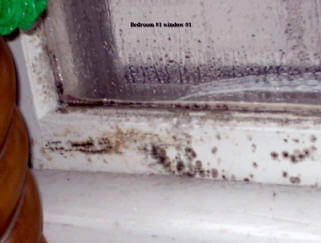Mold Remediation San Francisco: Environmentally Safe Methods
 If you have had a problem with flooding or too much moisture in your home, chances are that you also have mold.
If you have had a problem with flooding or too much moisture in your home, chances are that you also have mold.
Mold can grow quickly under the right environmental conditions, spreading across walls, ceilings and floors and even hiding in pipes, ducts, and behind drywall.
Since it is a fungus, mold can be very tricky to fully eradicate since it can produce more spores and multiply.
About Mold Remediation
Fortunately, there are many effective methods of remediation (mold removal) and even some new technologies that help to completely remove all kinds of mold, including the potentially dangerous toxic molds. Mold must be treated as a bio-contaminant, not just a physical substance to be removed. Abrasive treatments such as sanding may be sufficient for removing the visible mold, but it can also push spores deeper into the surface as well as into the air, causing possible airborne contamination.
A Fungus Among Us
There are two important considerations when dealing with fungus such as mold. One is fungal viability, which is the mold’s potential for growth under the right conditions. This is why it is so important to completely remove the mold rather than just kill it — mold spores can remain dormant for a long time, but later grow when conditions are favorable again (high moisture/humidity).
The second problem is fungal allergenicity, the extent to which a fungus can cause an allergic reaction. Exposure to fungi, particularly the toxic varieties such as black mold, has been found to cause or exacerbate many adverse health conditions, ranging from fatigue, respiratory problems, severe allergic reactions, asthma, and hypersensitivity pneumonitis.
Professional mold remediators use special methods to treat and totally remove mold from your home. Substances such as chlorine or pesticides are not effective against mold because they only work on hard, nonporous surfaces, leaving dormant mold spores embedded in porous materials such as concrete and wood. They also have no effect on the allergenicity potential of the fungus, as some fungal proteins can survive the decontamination and vacuuming process and remain a health hazard, especially for allergen-sensitive individuals.
Oxidative Remediation
Oxidative remediation is a method designed to address both the fungal viability and fungal allergenicity issues, while being an environmentally safe and effective treatment. Originally developed to combat bio-terrorism, oxidative remediation involves a chemical reaction that uses reactive super-hydroxyl radicals to attack and decompose the proteins and organic compounds of the mold, neutralizing it as an allergenic threat.
It is not harmful to the environment because the byproducts of the oxidation process later break down into oxygen and water, so there are no pesticides, poisons or other chemical residue left after the treatment. It can be used on both porous and non-porous surfaces, to reach into any nook and cranny where mold may be lurking.
